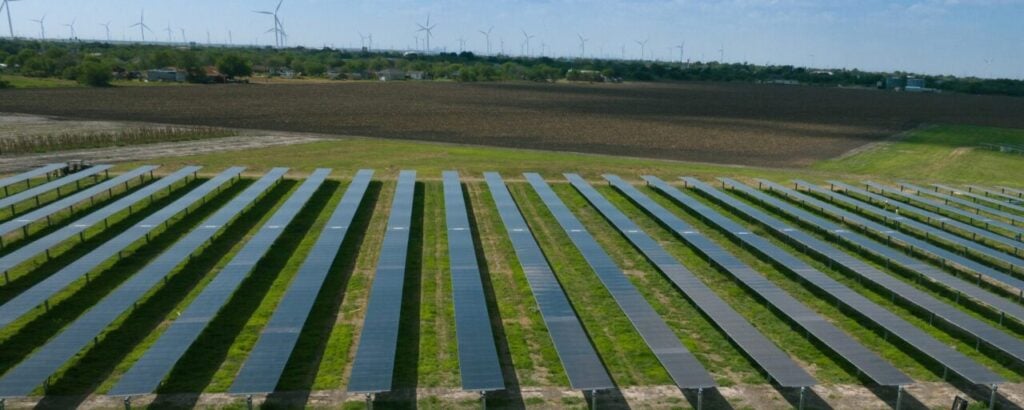
Solar energy developer Lightsource bp has begun producing power from a 288MW project portfolio in the US state of Texas.
The portfolio comprises two projects: the 163MW Starr Solar in Starr County and the 125MW Second Division Solar project in Brazoria County.
Try Premium for just $1
- Full premium access for the first month at only $1
- Converts to an annual rate after 30 days unless cancelled
- Cancel anytime during the trial period
Premium Benefits
- Expert industry analysis and interviews
- Digital access to PV Tech Power journal
- Exclusive event discounts
Or get the full Premium subscription right away
Or continue reading this article for free
The projects represent US$348 million in private investment, led by renewables asset manager HASI through a deal finalised in October 2024.
The Second Division project also has a power purchase agreement (PPA) in place with global fashion retailer H&M.
Lightsource bp interim COO Helen Brauner said the US$348 million portfolio was a “testament to the power of private investment in strengthening energy security and supporting economic growth”.
In addition to private investment, the facilities are eligible for tax credits under the Inflation Reduction Act (IRA). Lightsource bp claimed the sites will qualify for the IRA’s 10% domestic content tax bonus as they deploy First Solar’s Cadmium Telluride (CdTe) thin-film solar modules – produced in Arizona – and tracker systems from New Mexico-based Array Technologies.
The sites are also located in “energy communities”, which are eligible for further tax support under the IRA.
Furthermore, the investment utilised the IRA’s tax credit transferability scheme, which allows energy companies and financial institutions to buy and sell tax credits for cash.
However, the funding landscape for future US solar projects is currently uncertain following President Donald Trump’s inauguration. An executive order signed on his first day in office paused the disbursement of IRA funds to energy projects and it is unclear how the wider legislation will be affected. Additionally, possible regulatory changes are likely to make it easier for new oil and gas developments to break ground.
Lightsource bp is a fully owned subsidiary of international oil giant bp.
In the week of Trump’s inauguration, the University of Texas at Austin issued a report showing that Texas counties could generate up to US$18.8 million in tax revenues from installing a 100MW solar project on their land. The report said these financial benefits had been a major driver of support for solar PV across Texas, which has jostled with California at the top of the US state tables for solar installations.
It is fairly likely that states which have benefitted significantly from solar deployments and IRA-backed tax money will seek to continue deployments even if Federal support lessens. The US solar market has also been driven by private corporate demand for reliably priced clean energy and private sustainability commitments (premium access).
Lightsource bp said that this portfolio brought its operational solar fleet in Texas to over 1GW of capacity. Last week the company commissioned the 187MW Peacock solar project in San Patricio County.






